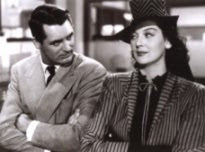 How difficult is it to hand out movie awards to avaricious recipients who are more than willing to accept them?
How difficult is it to hand out movie awards to avaricious recipients who are more than willing to accept them? It's apparently overwhelming, wildly so, if one is to judge this dubious exercise by what The Independent Spirit Awards and The 83rd Oscarcast - polar opposites in temperament - separately wrought this weekend.
A deadly dose of forced fun and self-conscious trendiness was the hallmark of The Independent Spirit Awards (aired by the Independent Film Channel late Saturday evening), a show that got off to an immediate bad start with host Joel McHale's adolescent opening monologue.
McHale, who is genuinely funny and usually reliable, set the base tone of the evening, practically inviting presenters and winners alike to be as crass as possible. And everyone seemed more than willing to comply.
 The show reached its nadir when Craig Robinson, so witty on "The Office," sat down at a piano to sing an obscene (and seemingly endless) saloon song that managed to make even devil rum and dirty sex both unappealing.
The show reached its nadir when Craig Robinson, so witty on "The Office," sat down at a piano to sing an obscene (and seemingly endless) saloon song that managed to make even devil rum and dirty sex both unappealing.You needed a body-sized prophylactic to get through this show.
The Oscarcast, lavish as usual (you could nearly smell the money on ABC last night), has already been ripped by Roger Ebert and Tim Goodman in The Hollywood Reporter.
Yes, it was a trainwreck from the get-go, what with a montage (also seemingly endless) which insinutated the charmless hosts James Franco and Ann Hathaway into clips from the ten films nominated for Best Picture. Frankly, I had completely forgotten that there were ten films nominated again this year - quick! name them! - given that only four titles ("The Social Network," "The King's Speech," "The Fighter" and "Black Swan") have been discussed for the past two months.
Where to start? Franco stood there like a stick throughout the show (legs apart, hands cupped at his crotch), with a smug, complacent smirk on his face. (Or is that the way he always smiles?) He seemed superior to the whole thing and made no eye contact whatsoever with Hathaway.
Heck, he hardly even looked at her.
Hathaway, meanwhile, worked overtime, perhaps trying to make up for Franco's vacancy. She changed her outfit at least a half dozen times and was totally "on" - in her wide-eyed, gee-whiz, "ain't-Hollywood-grand-?" mode. Which I can take only in small doses. The woman is exhausting.
Hathaway has that brand of confidence and self-satisfaction that makes it seem as if she's always hugging herself. She also did a gratuitous solo, for no apparent reason other than to show what a gosh-darn great singing voice she has. It was capped with Franco walking on stage, crossdressed as Marilyn Monroe. Why? The "bit" ended there. It went nowhere.
On "Morning Joe" today, Joe Scarborough bemoaned the fact that she was stuck on stage with Franco because Hathaway is such "a great actress." On what basis? "Rachel Getting Married"? That's one film and that's it. In other films, she's never been more than competent.
But Hathaway is preferrable to Franco, who uttered the single most jaw-dropping line of the night when, after Marisa Tomei introduced the technical winners (whose awards were given at a separate event), Franco shouted "Congratulations, nerds!" He should talk.






























